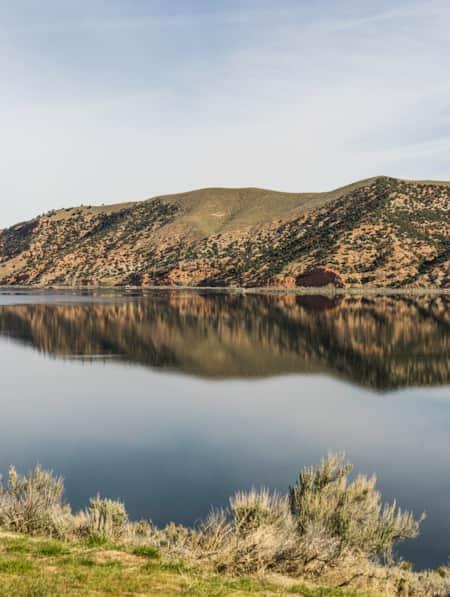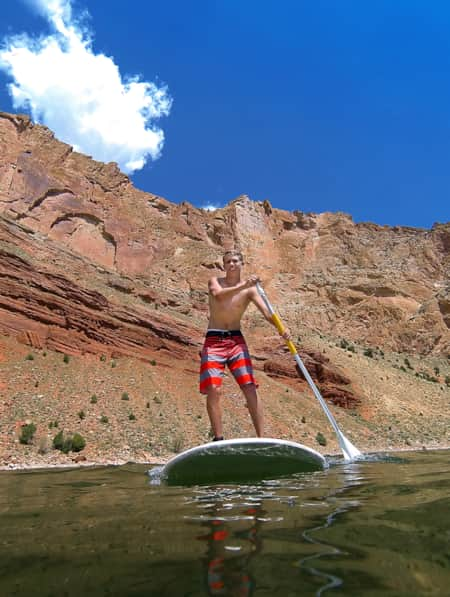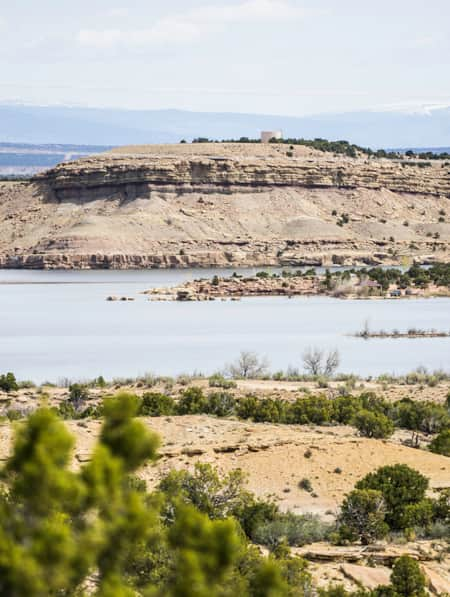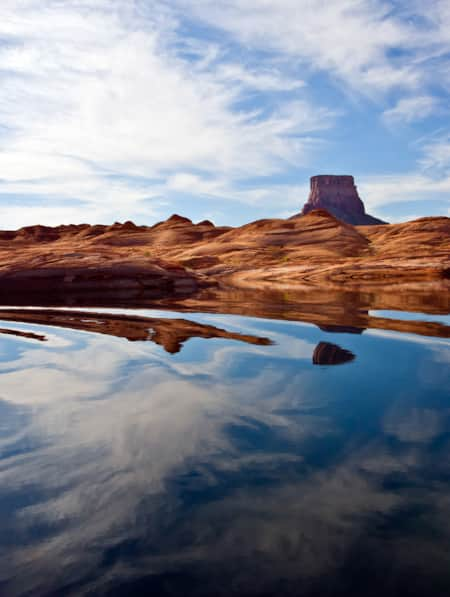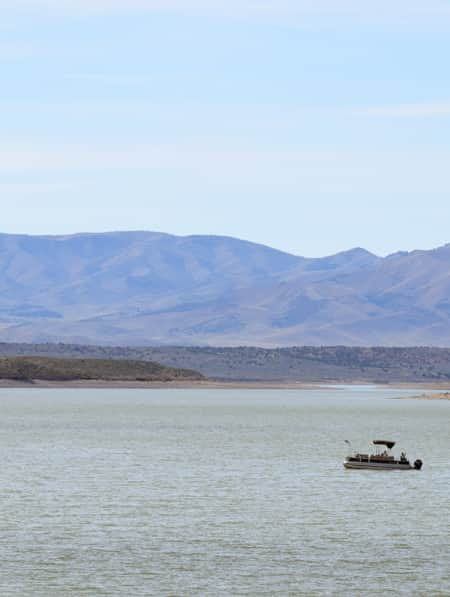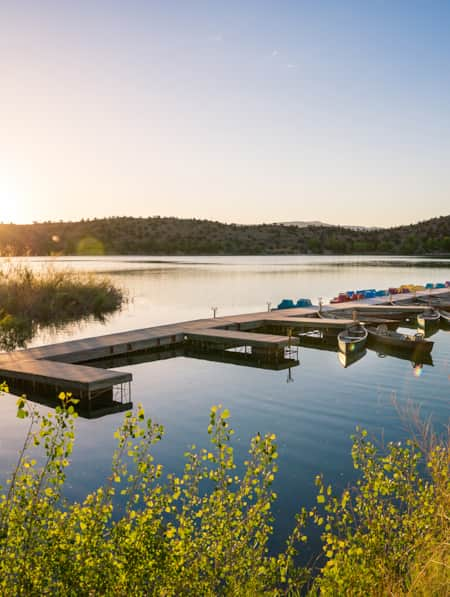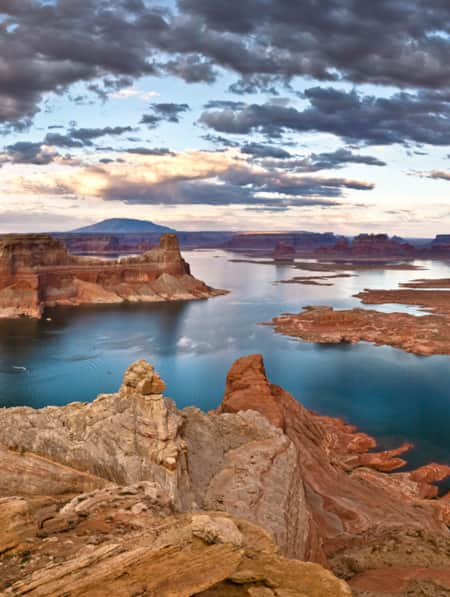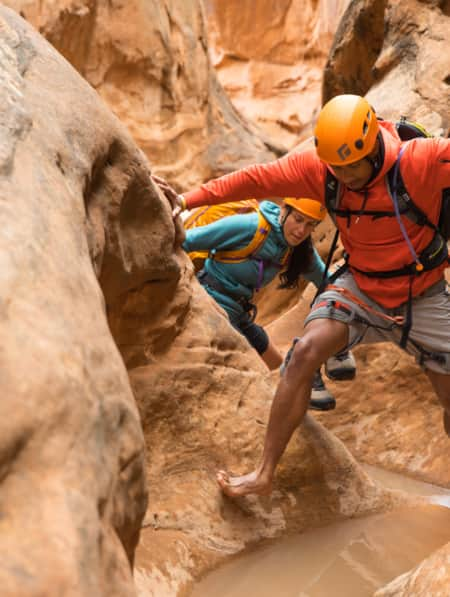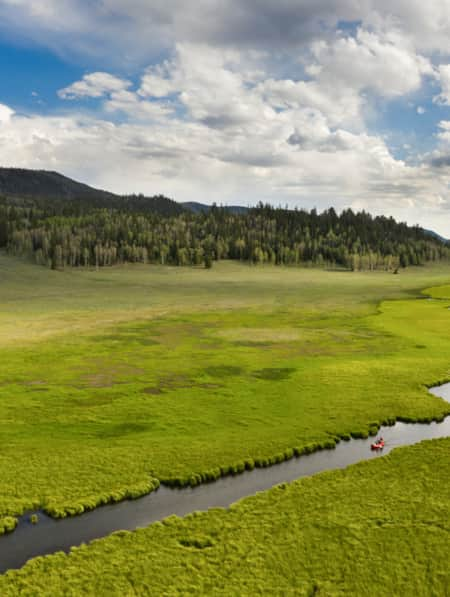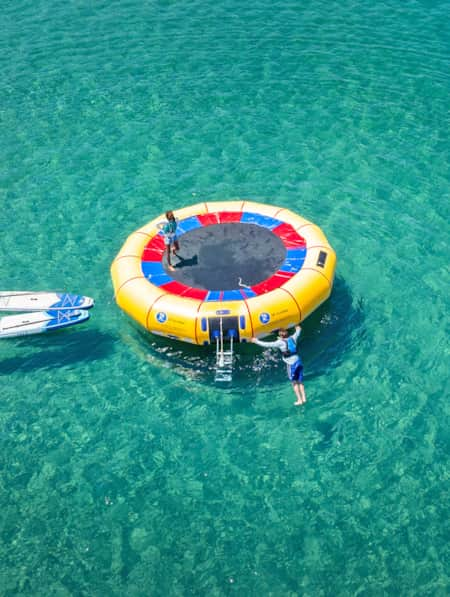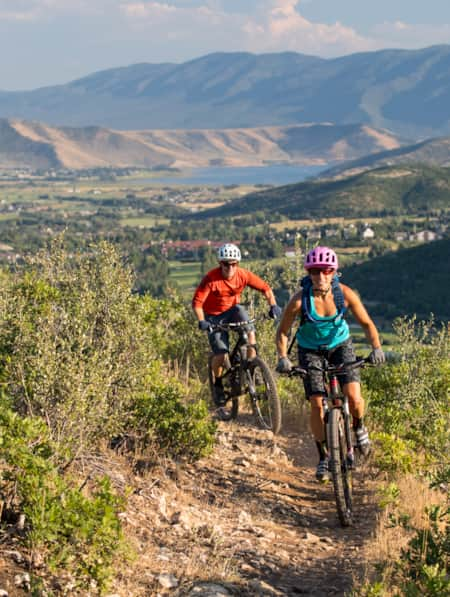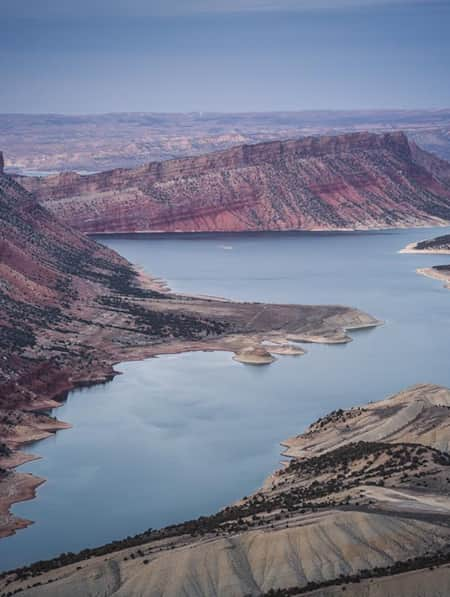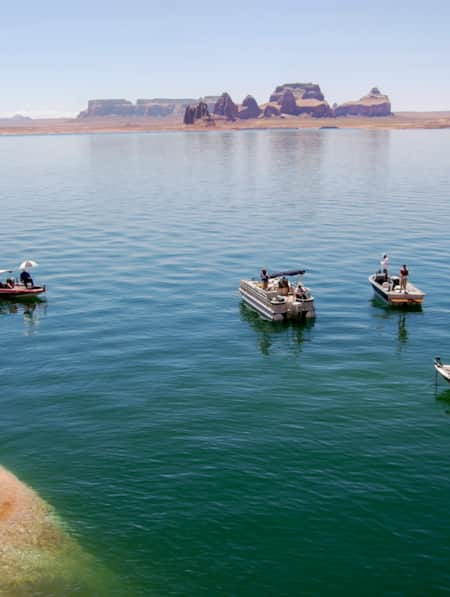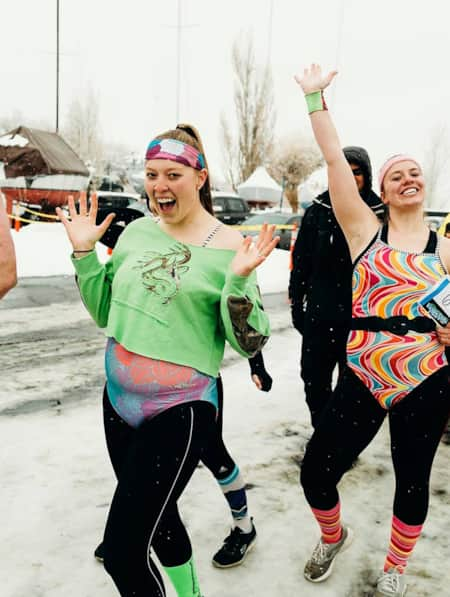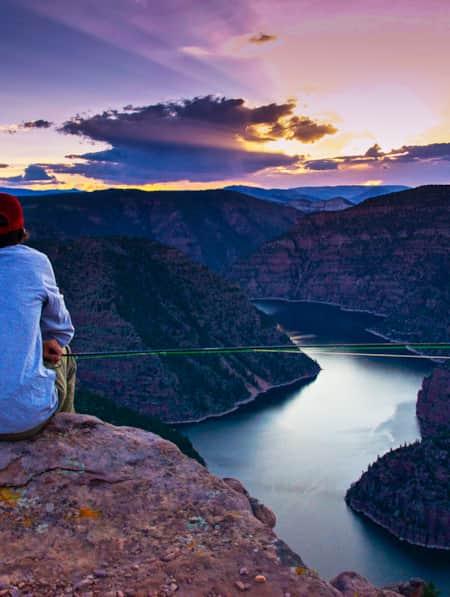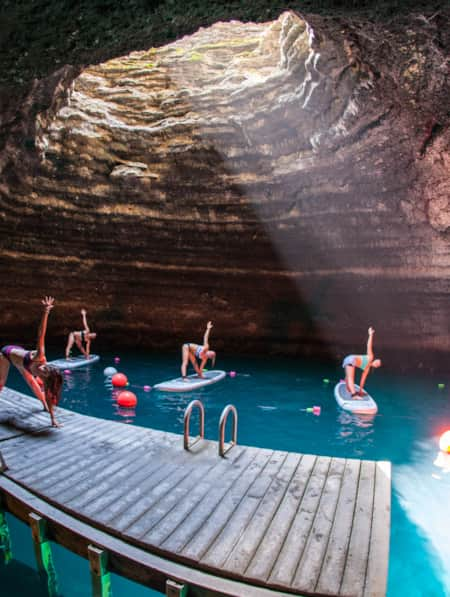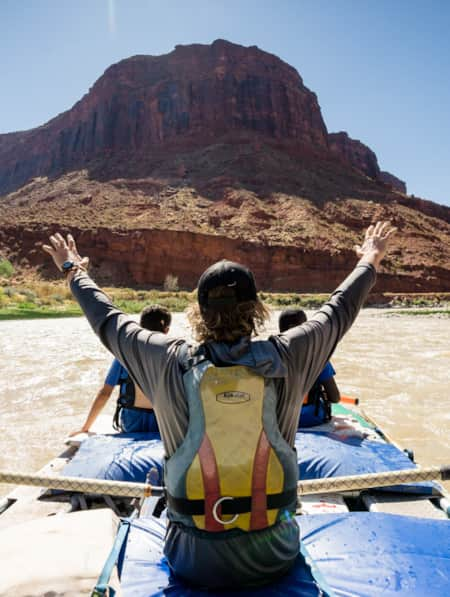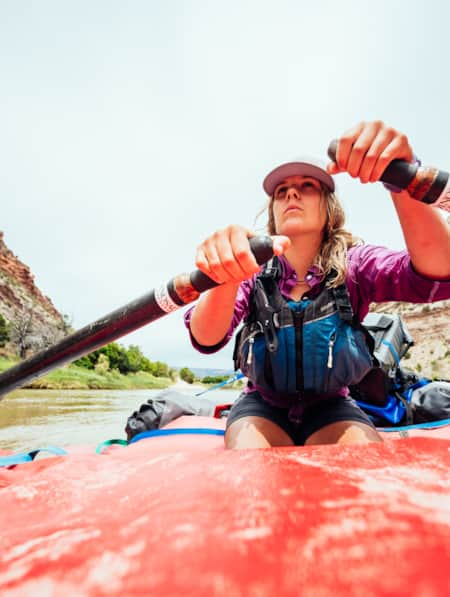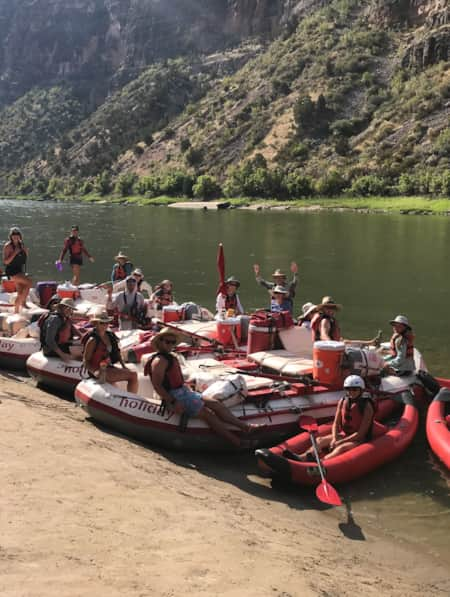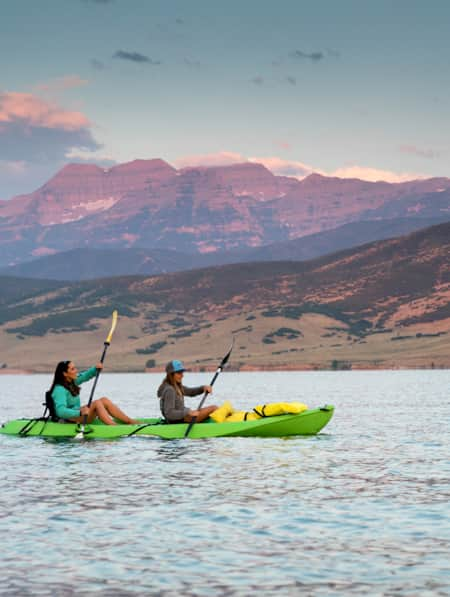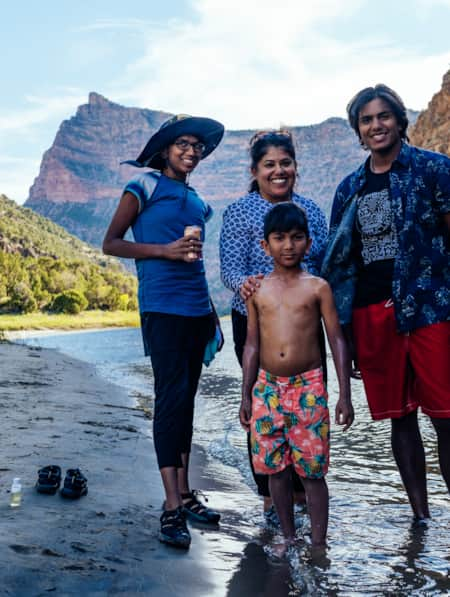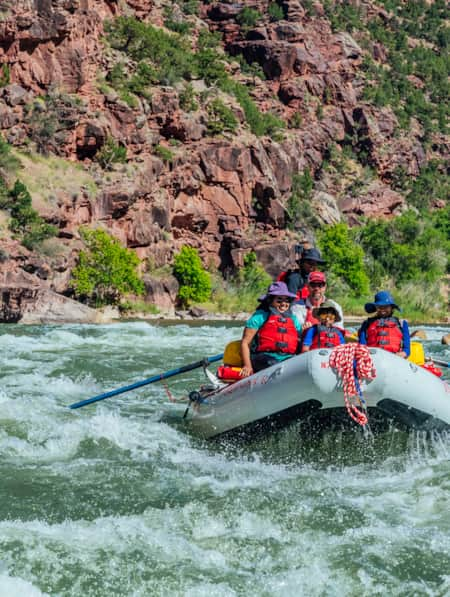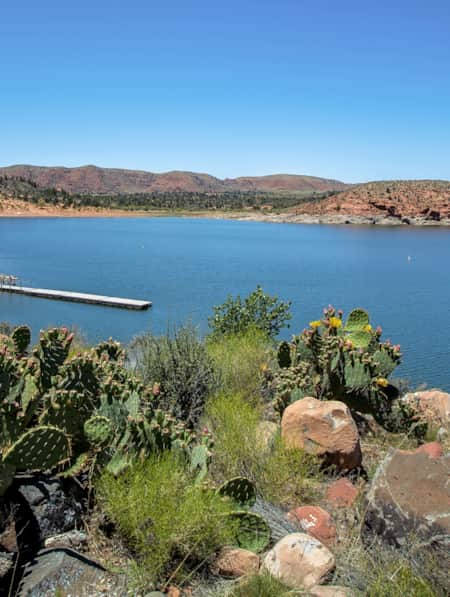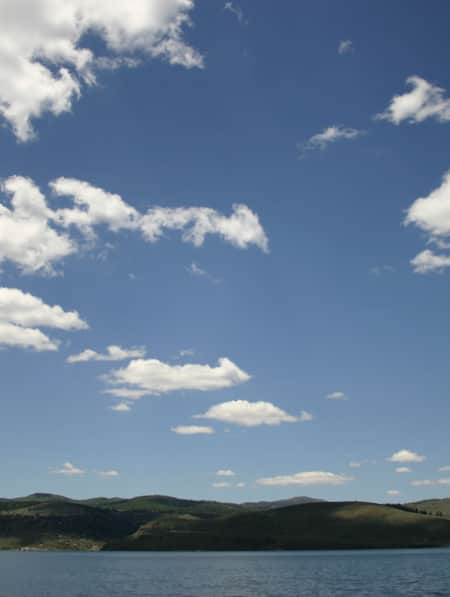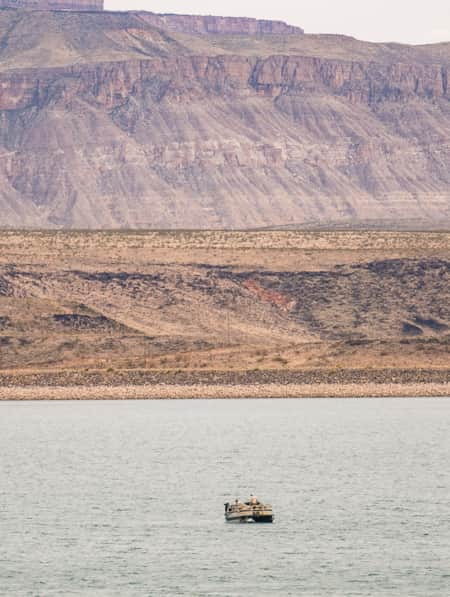Chasing John Wesley Powell: 6 Places to Explore Utah's Green and Colorado Rivers
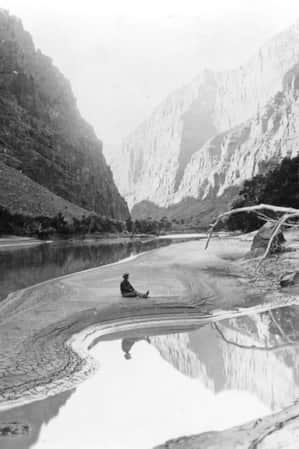
One hundred and fifty years ago in, May, 1869, a one-armed Civil War veteran set off with nine mountain men on a scientific expedition to map one of the last blank spaces left on the U.S. map: The Green and Colorado Rivers through what would become known as the Grand Canyon.
John Wesley Powell’s 1,000-mile, three-month adventure, officially called the Powell Geographic Expedition, started in Wyoming and ended in Arizona. But the heart of it went through Utah and its jaw-dropping wilderness — through what would become Flaming Gorge National Recreation Area, Dinosaur National Monument, Canyonlands National Park and Lake Powell.
Certainly, some of the scenery and route has changed since the May 24, 1869, trip (which Powell repeated in 1871): dams were built, altering the rivers and flooding the canyons he explored. But much of the route remains protected, ensuring a rugged and wild adventure for those following in Powell’s wake.
Here are key segments of his trip and what they offer today:
Flaming Gorge National Recreation Area
This national recreation area’s famed crystal-clear, trout-stuffed water and year-round destination for everything from boating to snowmobiling earned its name from Powell and his men.
They entered modern-day Utah about 60 miles and three days after they put in. Wowed by the reflection of the sun off the brilliant red gorge that looked like it was aflame from a distance, they called the canyon Flaming Gorge.
Today, canyons near that famed gorge — including Horseshoe, Kingfisher, Hideout and Red look much the same as in pre-dam days.
With its 375 miles of shoreline, more than 600 camping and picnic sites and 100 miles of trails for hiking and mountain biking, the reservoir and surrounding recreation area provide an endless number of activities: paddleboarding, kayaking, scuba diving, waterskiing, backpacking, cross-country skiing.
Below the dam to Little Hole, the Green River is called “The Aquarium” with its earned reputation as a premier trout fishing stream. The 7-mile Little Hole National Recreation Trail parallels the river and provides access for fly-fishing and hiking.
Lodore Canyon
This was the first major canyon of the expedition and it proved challenging: One of the boats was lost along with 2,000 pounds of equipment and food. Someone on the trip also named the canyon Lodore, perhaps after an Englishman’s poem.
This portion of the Green River through the Dinosaur National Monument area offers what some river rats consider the best trip along the Powell route. (Read: Remote Adventure on the Green River.) The river is different because the flows are regulated by Flaming Gorge Dam, which allows a longer river season. Still, the views remain much the same, since access to most of the surrounding land is gained only by the river and permits are limited.
The Gates of Lodore provides a striking entrance to the canyon, as blood-red sandstone walls rise abruptly from the water. A river trip also features Echo Park, where the Green meets the free-flowing Yampa River at the face of the massive Steamboat Rock, along with side trips to petroglyphs.
Dinosaur National Monument protects the river and surrounding area and offers opportunities to learn about the giant reptiles that used to call this place home.
"As Ashley and his party were wrecked here, and as we have lost one of our boats, we adopt the name Disaster Falls for the scene of so much peril and loss."
– John Wesley Powell
Desolation Canyon
The Green River winds through this virtually untouched gorge for about 80 miles, carving the Tavaputs Plateau in half deeper in some spots than the Grand Canyon. The plateau is one of the largest roadless areas in the American west, ensuring the area is nearly as wild as it was in Powell’s day. (Read: Lost and Found in Desolation Canyon.)
The river boasts over 60 riffles and rapids with views of canyon walls deposited by long-ago streams and lakes, including the Lighthouse Rock perched on top of what looks like steps made for a giant, and Queen Nefertiti Rock named for its regal Egyptian appearance.
Paddlers love the canyon for its clean, sandy beaches near cottonwood groves. And there are plenty of hikes in side canyons — to Fremont rock art and a ranch where Butch Cassidy’s Wild Bunch slept.
BLM permits are required to float the 84 miles from Sand Wash to Swaseys Beach. Hiking and camping permits from the Ute Tribe are also required to access reservation land.
"...[T]he river is very rapid and many lateral canyons enter on either side....crags and tower-shaped peaks are seen everywhere, and away above them, long lines of broken cliffs; and above and beyond the cliffs are pine forests, of which we obtain occasional glimpses as we look up through a vista of rocks....We are minded to call this the Canyon of Desolation."
– John Wesley Powell
Cataract Canyon
This canyon sits 3 miles below where the Green and Colorado rivers meet (called the Confluence) — and it bedeviled the Powell crew. The rapids appeared so dangerous, the crew spent days portaging their boats past cataract after cataract.
Today, a large sign warns paddlers of “hazardous rapids” as they enter Cataract Canyon and the free-flowing Colorado River. Some 400 miles away from the dam that impounds the Green River and 180 miles from another on the Colorado, this segment of the river provides the most powerful white water in the country. It boasts 30 big rapids including The Big Drop, where the river drops over 30 feet in less than a mile.
Boaters and paddlers can get permits through Canyonlands National Park, which manages the canyon. Cataract itself is 14 miles, but river trips are usually about 48 miles, starting upstream on the Green or Colorado and ending on Lake Powell.
For those who don’t want to travel via river, there’s still plenty to do in the surrounding national park, from taking in breathtaking vistas in the park’s Island in the Sky district on its paved scenic drive, to hiking or four-wheeling in The Needles district, or serious backcountry trekking in the remote section called The Maze. The park’s day-use Horseshoe Canyon contains some of the most significant rock art in North America and is accessible via a 7-mile hike.
"God help the poor wretch that is caught in the canon during highwater."
– Jack Sumner, member of the Powell expedition
Lake Powell
Powell described Glen Canyon as a “land of beauty and glory” and named it for its many glens and alcoves near the river. About 100 years later, the canyon was flooded by the Glen Canyon Dam on the Colorado River, forming a lake named for the one-armed explorer.
With 2,000 miles of shoreline, Lake Powell offers up boating, kayaking and fishing galore against rugged red rock canyons and mesas.
For visitors seeking more solace than the lake’s annual 3 million visitors provide, the surrounding Glen Canyon National Recreation Area offers plenty of hikes including multi-day backpacking trips, as well as mountain biking.
And Rainbow Bridge National Monument, reached via boat or hike on the Navajo Nation by permit only, is one of the world’s largest natural bridges and is considered sacred by some American Indian tribes. It’s been labeled a Dark Sky Sanctuary for its out-of-this-world views (try counting 15,000 stars).
"We have met nothing to compare with it before."
– George Bradley, member of the Powell expedition
Grand Canyon
About 900 hundred miles and three months after they launched their boats, Powell and the crew reached what he later named the Grand Canyon. Launched from a base camp in Kanab, theirs was the first recorded passage of white men through the entirety of what Powell called “the great unknown,” though Grand Canyon has been inhabited for 12,000 years.
It was in Utah where Powell created the first preliminary map of the Grand Canyon region —in a tent in Kanab where he had set up a Colorado River Expeditions headquarters from 1870-1878.
Today, the canyon is one of the Seven Wonders of the World. It contains 277 miles of the Colorado River and is up to 18 miles wide. Most of the 5 million annual visitors come for the majestic views of its fantastic shapes and colors — red, buff, green, pink, slate and violet.
Those who venture below the rim can hike and camp in the backcountry (with permits), take a mule ride down to the bottom or raft part of the mighty river that carved the canyon 5 to 6 million years ago. Whitewater trips last from 3 days to 3 weeks.
"The limestone of this canyon is often polished, and makes a beautiful marble. Sometimes the rocks are of many colors — white, gray, pink and purple, with saffron hints."
– John Wesley Powell

